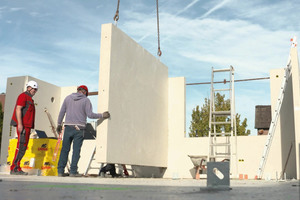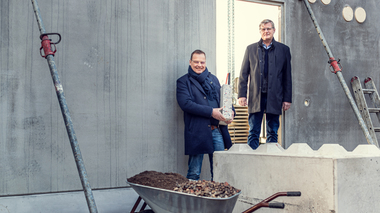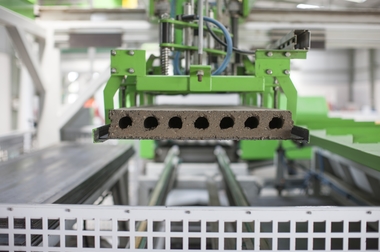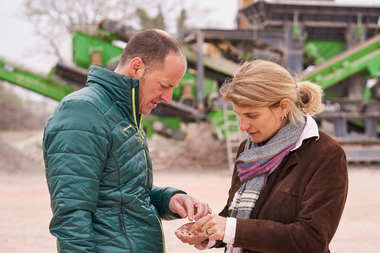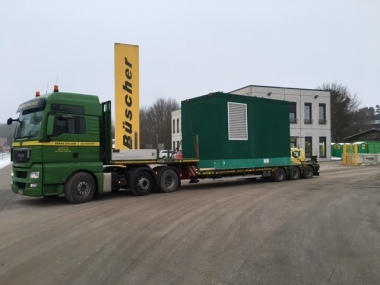Back for the future – Interior wall panels made with 100% recycled aggregates
The team from the Büscher group of companies demonstrated that both load-bearing and non-load-bearing interior walls can be manufactured exclusively with demolition materials and used in building construction. In terms of quaity and visual appeal, these walls are equivalent to prefabricated walls made of standard primary concrete. Producing the walls with recycled materials provides a number of benefits, such as eliminating the need for sand and gravel extraction and reducing harmful carbon emissions by 13% compared to the conventional approach. The custom components manufactured in this process are also well-suited for use in serial housing construction.
First recycled house uses interior walls up to building class IV made of 100% natural aggregate substitution
The Büscher brothers wanted to prove for themselves that the walls made with recycled aggregates can be used in serial, cost-effective residential construction. Just a five-minute drive from the production site, they constructed a new building on their own – a three-party rental house in which all interior walls are made entirely of recycled concrete. According to the company, Büscher’s recycled new build is less expensive compared to the use of primary building materials, but the prefabrication of the individual elements was associated with yet another advantage compared to a new building with masonry walls: The shell was completed within two weeks, which is why tenants could move into the recycled house in early February, after a construction phase of just about four months.
“We want to publicize our process on a nationwide scale and would be pleased if other concrete businesses, recycling companies and other interested parties contacted us on the subject of sustainable construction with secondary building materials,” says Thomas Overbeeke, who works with Büscher. “The construction industry is facing a comprehensive transformation. New approaches are needed to ensure that used building materials do not end up as waste – this is what we can prove with the Büscher wall, and we’ve also got the approvals required to do so.”
According to the German Federal Environment Agency, 73.9 million tons of mineral waste were generated from construction and road demolition in 2018. However, according to the agency, only 15.8 million tons of these recycled materials were used in asphalt and concrete production. In technical terms, significantly greater quantities of waste from building construction could be reprocessed and fed back into the building construction cycle. By way of example, about 95 m³ of recycled concrete were used and about 155 tons of primary raw materials were saved in the Büscher pilot project. On a larger scale, the remaining 58.1 million tons of construction waste could thus be used to build about 375,000 multi-family houses in the same style, according to Thomas Overbeeke. This would provide housing for 2.25 million people.

